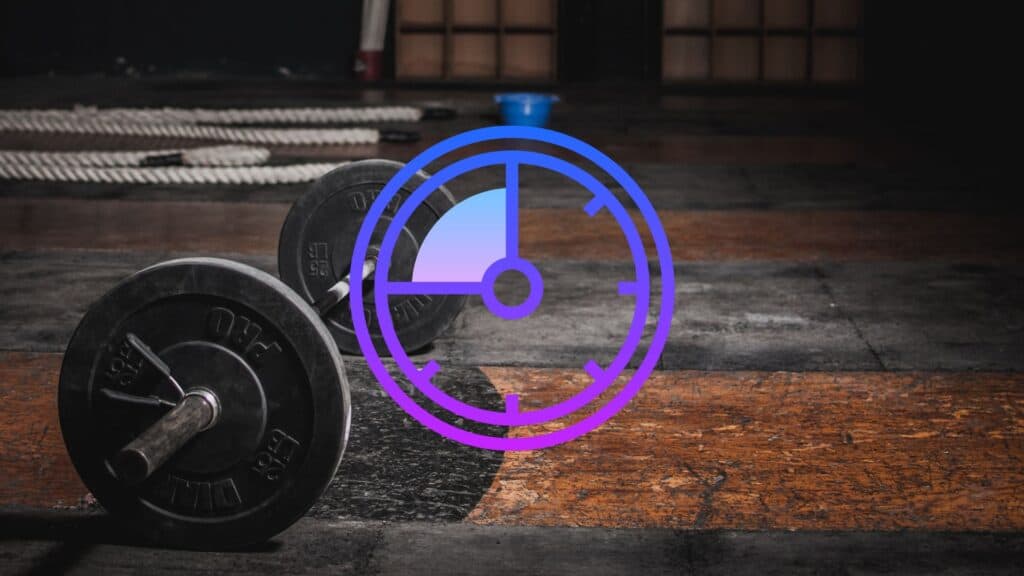Factors Affecting the Longevity of Gym Flooring (Intro)
Gym flooring can evoke beauty and radiance to give your gym a stunning aesthetic, but a potential problem lies in its durability. Regularly having to fix or replace gym flooring can become frustrating. Rubber gym flooring is popular for use in high-traffic areas and outdoor spaces. In addition to its ability to endure, there are further benefits and some inherent drawbacks. So, how long does gym flooring typically last?
The lifetime of gym flooring depends on its durability, weight-bearing capacity, and the care it receives. Professionally installed gym flooring should give you at least five years of moderate to heavy use before showing signs of wear and tear. The main things to consider for the durability of gym flooring are:
- The expertise of the flooring company
- Appropriate choice of material
- Proper fitting and installation by professional contractors
- Proper care by clients, i.e. you as the gym owner.
- Factors Affecting the Longevity of Gym Flooring (Intro)
- How Can I Extend the Life Span of Gym Flooring?
- Apply Appropriate Maintenance Measures
- Choose Reputable Professionals to Handle Your Gym Flooring
- Which Gym Flooring Proves Most Durable?
- Rubber Flooring
- Vinyl Flooring
- Other common gym flooring materials include:
- Which Material Should I Use?
- Rubber:
- Foam:
- PVC Plastic:
- Polypropylene:
- Will a Recoat Improve the Durability of a Wooden Gym Floor?
- Summary
How Can I Extend the Life Span of Gym Flooring?
The key to durable gym flooring is your choice of material and how you take care of it. Let’s get into the details. A cost-saving solution lies in fixing worn-out areas. You can patch holes or damaged areas of the subfloor with industrial-grade adhesive patches before applying vinyl flooring over the top. A well-made repair will ensure that your flooring lasts for a few more years without having to fork out for a refit.
A top maintenance tip is to clean up and dry off spills immediately. Maintaining a temperature in your gym will ensure that it doesn’t get hot enough to make your flooring vulnerable to deterioration. Ensuring your gym has adequate ventilation will protect your flooring from humidity-induced warping.

Apply Appropriate Maintenance Measures
Different types of gym flooring come with different maintenance requirements. For example, harsh chemical detergents on rubber flooring will fast-track its deterioration. It’s in your best interest as a gym owner to familiarise yourself with the optimum cleaning protocols for your chosen material to prolong its lifespan.
Choose Reputable Professionals to Handle Your Gym Flooring
The material and installation process plays a vital role in the durability of gym flooring. The lifespan of your gym flooring depends on the level of wear and tear it endures and what kind of surface lies underneath it. For instance, if you plan an area for heavy equipment like treadmills, you’ll need to ensure the surface material can handle that weight without getting damaged too quickly. You should anticipate replacing your flooring every 3-5 years for this use. As it stands, no companies are offering a lifetime warranty for their flooring products. Guide your choice by the appropriate material and thickness for your gym.
Which Gym Flooring Proves Most Durable?
There are many different types of gym flooring: Rubber, Vinyl, Foam, Polypropylene, PVC Plastic, and Carpet. However the two predominant types of gym flooring are rubber and vinyl.
Rubber Flooring
The popular choice for fitness centres, rubber flooring has proven highly durable. With the installation of rubber tiles or rolls of rubber to cover an area, rubber mats can provide even further protection in certain areas.
Rubber, seen as the best option for gym flooring, is:
- Naturally durable, boosting longevity
- Good shock absorption for dropped weights and high-impact activities
- Resistant to moisture
- Helps with sound-proofing
- Easy to clean
Vinyl Flooring
This material applies more to indoor sports rather than weight lifting and gym exercises. However, it can accommodate gym equipment like racks and treadmills. The advantage of vinyl flooring is its customisable ability, which opens up the potential for branding, design, and beauty.
Other common gym flooring materials include:
Carpet
Great for absorbing moisture, it’s also ideal for storage areas where dust accumulates.
Polypropylene
This material is an economical, durable alternative to carpet and can be used in high-traffic areas where abrasions might occur. It is hard underfoot so most gyms choose it for non-cardio workout areas. Polypropylene is non-slip and easy to clean, so people who prefer to exercise on carpeted floors can still do so safely.
PVC Plastic
Mats, such as those made from PVC plastic, are an excellent way to absorb impact during exercise routines. They can be placed over the existing surface to provide additional cushioning and keep sweat from seeping into the padding beneath the gym floor.
Which Material Should I Use?
Rubber flooring is easy to clean and an excellent choice for a commercial gym. As superior as it is for vigorous exercise, it is not considered so for a home gym. Some people find the smell of rubber grows to be unpleasant and dominating. Foam is a better choice in this instance.
Now to the burning question: which material is best for you? Let’s assess them individually.
Rubber:
| Advantages | Drawbacks |
|---|---|
| Highly durable | Quite expensive |
| Moisture resistant | Poor heat insulation |
| Great for shock absorption |
Advantages
- Highly durable
- Moisture resistant
- Great for shock absorption
Drawbacks
- Quite expensive
- Poor heat insulation
Foam:
| Advantages | Drawbacks |
|---|---|
| Excellent heat insulator | Less durable |
| Moisture resistant | Prone to excessive compression |
| Great for shock absorption |
Advantages
- Excellent heat insulator
- Moisture resistant
- Great for shock absorption
Drawbacks
- Less durable
- Prone to excessive compression
PVC Plastic:
| Advantages | Drawbacks |
|---|---|
| Cheaper | Poor durability |
| Ultra-smooth surface | |
| Best for yoga or floor exercise |
Advantages
- Cheaper
- Ultra-smooth surface
- Best for yoga or floor exercise
Drawbacks
- Poor durability
Polypropylene:
| Advantages | Drawbacks |
|---|---|
| Highly durable in high-traffic areas | Expensive |
| Best for playing sports | Coarse surface |
Advantages
- Highly durable in high-traffic areas
- Best for playing sports
Drawbacks
- Expensive
- Coarse surface
From the above analysis, you’ll notice that one material’s strengths cover another material’s weaknesses, and vice-versa. There is no clear dominance among so many options, which highlights the fact that different types of flooring suit different situations and needs.
For a small gym, such as a PT studio or home gym, foam and PVC flooring would be a sensible choice. On the other hand, rubber and polypropylene flooring would take the lead for a more sophisticated commercial gym setting.
Rolls of rubber sheet flooring are a viable solution for humid or moisture-heavy environments. They have fewer seams yet retain all the benefits of rubber tiles. In addition, many manufacturers provide sheet products in the same designs and colours as their tile products, often at a lower cost.
Will a Recoat Improve the Durability of a Wooden Gym Floor?
This question arises from individuals with an older, more traditional, wooden gym floor. Preserving a beautiful wooden gym floor will require recoating. The wooden gym floor is finished to look clean and bright. With time and regular use, the finish will wear off. A recoat will restore its appearance and improve its durability. You can recoat every three years; however, if the gym floor is heavily used, you may need to recoat more often.
Summary
Gym flooring is one of the top contributing factors to a gym’s aesthetic, the effectiveness of its activities, and the overall safety of its people and equipment. If it receives proper care and good maintenance, your gym floor should give you many years of safe use before needing significant attention.
To comment on the article, please proceed to the Telegram post. We encourage you to read our comprehensive article “How To Choose Gym Flooring“.
Disclaimer: The opinions and positions expressed in this publication are those of the authors and collaborators and do not necessarily reflect the views or policies of the professional fitness community.

